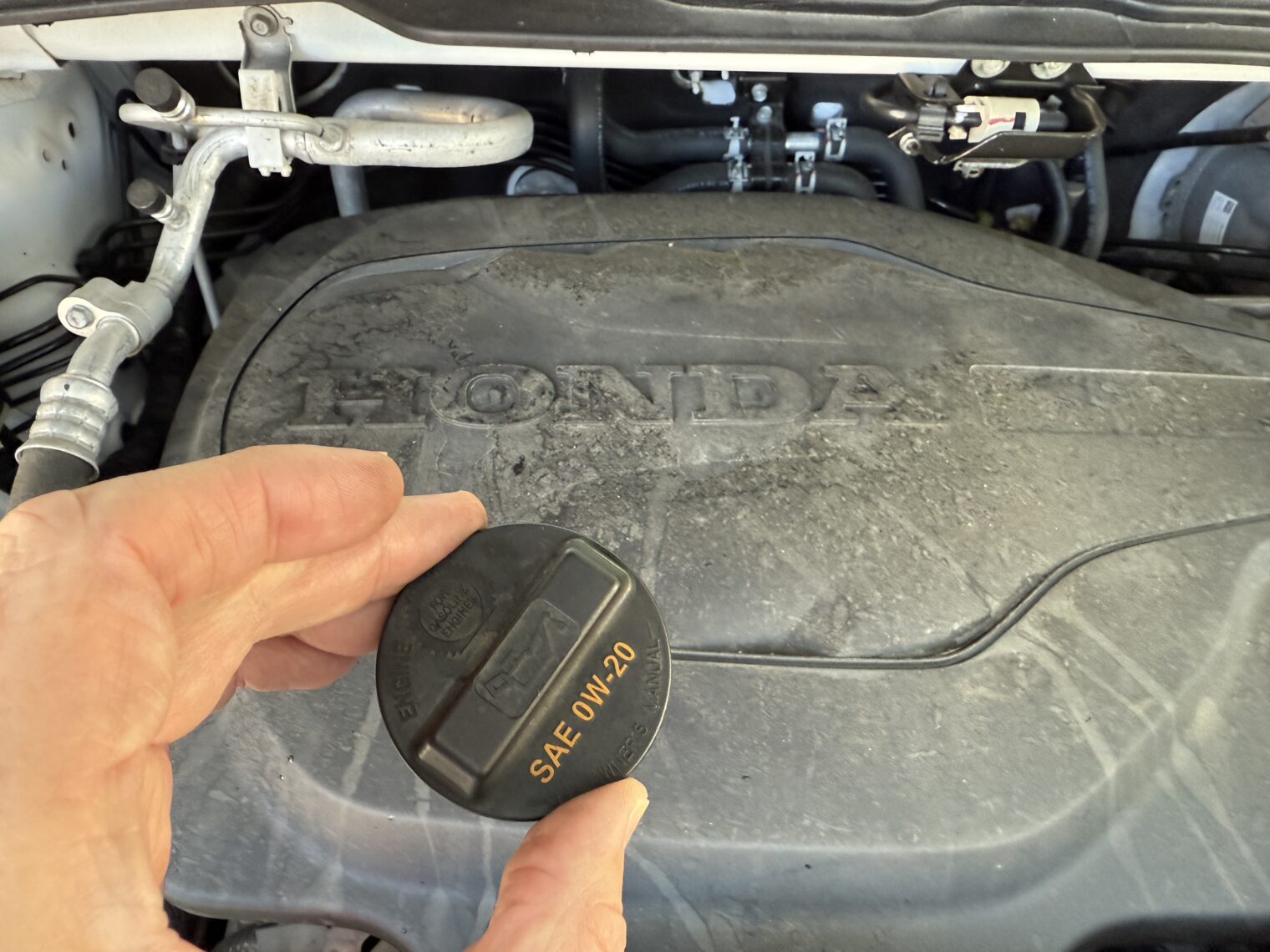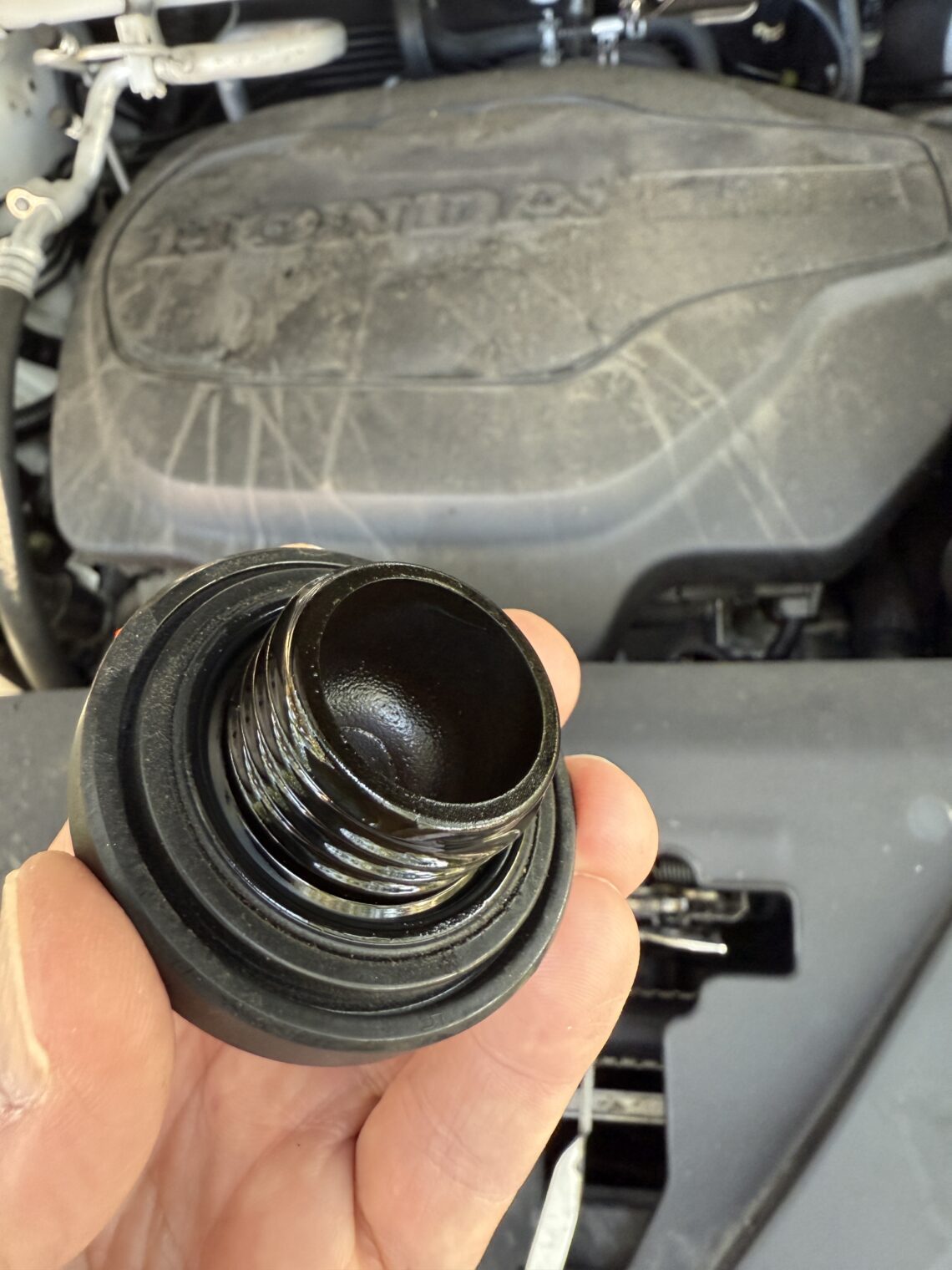We had a 0-time Continental factory rebuilt engine dropped into a 2005 Cirrus SR20 back in 2019. The steel oil filler cap was new at the time. After 5.5 years of operation, in which combustion generated water vapor as a byproduct, the cap rusted out to the point that it is missing one of the teeth that engages spring tension to keep it in place.


Some pilots remove the cap after every flight for some period of time to let the steam out, though quite a few of these heroes of diligence also report having suffered from rusted oil filler caps. You might reasonably ask why anyone should care about the lifetime of this part. Why not buy a new cap every 5 years? An impervious-to-rust (plastic) ACDelco GM oil filler cap is $11 (presumably this is because people sometimes lose the caps, not because the cap won’t outlast the engine in ordinary circumstances). How much more could an aviation cap cost? (Answer: $386-$11)
I talked to some aviation mechanics about this and none thought that there would be any problem in Continental or Lycoming catching up on 70+ years of improvements in plastic or taking a class titled “Here are some things that Ford, Toyota, and GM were doing in 1985”. The best explanation that anyone had of why this expensive and rust-prone part would be used is that the engine family was certified like this back in the 1930s and it is too much effort to get the FAA to sign off on a change.
Maybe general aviation will be saved by eVTOLs that are designed and built with a completely different philosophy. If not, though, I wonder if we could get a DOGE going between the manufacturers of legacy piston engines/aircraft and the FAA to ask and answer questions of the form “Why wouldn’t you use a plastic cap in a rust-prone environment?”
3D printing nerds: have we advanced to the point that it is possible to toss a metal cap into a scanner and print a dimensionally identical plastic replacement that can handle the temps at the top of the engine (the oil temperature redline is 240F so maybe you want a plastic that is good to 400F)?
For reference, here is the perfect-condition oil filler cap, never previously touched or used by anyone other than the dealer, in our 4.3-year-old Honda Odyssey:


It’s available for $13.49, including shipping, from a Honda dealer via Amazon. If we assume that shipping is bundled into the price, this is a $10 part at most. Why did people replace it? Here are a couple of Amazon review reasons:
- The original cap began to leak around its base after 8 years and 60K miles.
- Don’t know what happened to my oil filler cap?
Searching for incidents across all cars where an oil filler cap was replaced, and ignoring those where the cap serves an engine venting or emissions function, it seem as though loss is the most common reason and typically due to a service shop forgetting to put it back on.

It is either a highly calibrated oil cap, each of which goes through 100s of hours of testing or the capitalist market in general aviation has failed and it is an oligopoly, I would go with oligopoly. If you do not have the money to bribe your way up the FAA ladder, there will be no innovation. The FAA ladder is protected by Textron and Continental, so they can keep producing engines and parts from the 1950s. Here is a great example of the oligopoly in action.
https://corsairpower.com/c172-experimental-update/
As for 3D printing the part, you can easily scan the part and then send it to one of the metal 3D printing shops in Shenzhen and have it delivered in about one week. Very easy to have to part 3D printed in stainless steel for less than $50.
Happy Liberation Day!
“the capitalist market in general aviation has failed and it is an oligopoly”
If it’s an oligopoly due to regulatory capture, that’s not a failure of capitalism. Reduce the iron fist of regulation and no more oligopoly.
Ben, good luck on reducing the regulation, when Textron and Continental control access to the FAA. Regulation will only be reduced if it serves the needs of the oligopoly. For the oligarchs, competition is really bad for profit. The last thing an oligarch needs is to worry about some innovative company reducing their profit margin. Welcome to the land of serfs and oligarchs!
You don’t seem to fly enough anymore to cause so much wear unless the SR-20 is a rental. It’s not to late to switch to a modern $4000 paramotor from China.
Thanks, lion, for the money-saving idea, but corrosion is not “wear”.
@philg you could put yer do-re-mi where yer mouth is and set up a shop and build tha stuff. There are people who know how to produce precision parts. They will trade their labour for money. The capital plant is available on the open market.
Canvas and wood work fine for body. MAchine yuer own engyun, Quit gripin and built it.
“It ain’t homespun, itz uh Greenspun.”
MM: Thanks for the idea, but it may be illegal. It’s a certified airplane so all of the parts on it have to get blessed somehow by the FAA. My question about 3D printing was more about curiosity than practicality.
@philg
fuq da Eff Ay Ay
on da aviation tip
if dey comin after u
cuz dey lookin for clues
zip yo lip and fly off
in yo greenspun ship
Reach For the Sky!
Look on the bright side, you’re getting free shipping!
To that end, there are some oddly priced items out there. Recently, I needed to replace a thermostat cover [1] and was shocked to see it priced at $144, hardly justifiable. Even a simple plastic cover [2] was overpriced at $32!
[1] https://www.grainger.com/product/JOHNSON-CONTROLS-Thermostat-Cover-For-Johnson-20RF68
[2] https://www.grainger.com/product/JOHNSON-CONTROLS-Thermostat-Cover-For-Johnson-38Y136?opr=PDPRRDSP&analytics=dsrrItems_20RF68
@georgea.
Forget chinese knockoffs. Set up shop in Ohio and you can beat them in price and quality.
Your post should be an article in AOPA magazine.
https://manifold.markets/DavidSchick/faa-finalizes-new-mosaic-rule-befor
Some joker made a prediction market for whether the FAA would actually finalize the MOSAIC rule by airventure 2025. Make some fake bucks!
This is why there are more experimental category piston singles built each year than certified. Alas, converting an existing certified aircraft to experimental does not seem to be viable.
The experimental aircraft geeks have cooked up a variety of engine dehydrator contraptions: https://vansairforce.net/threads/diy-engine-dehumidifier-purge-pump.224219/
For 3D printing – you could print in nylon (service temp ~280 F), PEI/Ultem (~340 F), or PEEK (~480 F). The latter two are out of reach of the typical consumer desktop printer, but there are attainable printers that only cost a few aviation monetary units that can do it.
The dehydrators are great for the royalty who inherited T hangars. Our Cirrus is in a “community hangar” where it isn’t necessarily near a power outlet and it needs to be moved if someone important calls and wants his/her/zir/their jet out.
I’m not sure it would be worth the hassle to scan it – the part seems simple enough to design manually. Your run-of-the-mill nylon filament probably isn’t good for continuous use at 400F but it looks like a few companies make HTN filaments. I’d just ask around to see what producers/retailers recommend. Higher-temp filaments tend to be harder to work with because they require higher ambient temperature (thus requiring an enclosed/heated build chamber) and higher extrusion temps, so it would probably be easiest just to have the final design printed by someone with the right machine. Take this with a grain of salt though, I’m just a casual hobbyist.
P.S.
– Why not just buy a new metal cap and have it powder coated or something, so it won’t rust?
– A plastic replacement would have to be thicker than the metal part.
Is it possible to powder-coat just the underside of a small item like this? That would be interesting and maybe acceptable to the FAA.
There must be some or other way to keep it from rusting. Also – you need the FAA’s permission to paint your oil cap? Damn.
At any rate, I’m sure it’s possible to 3D-print a suitable cap. A company called polimotor prints entire engines, supposedly.